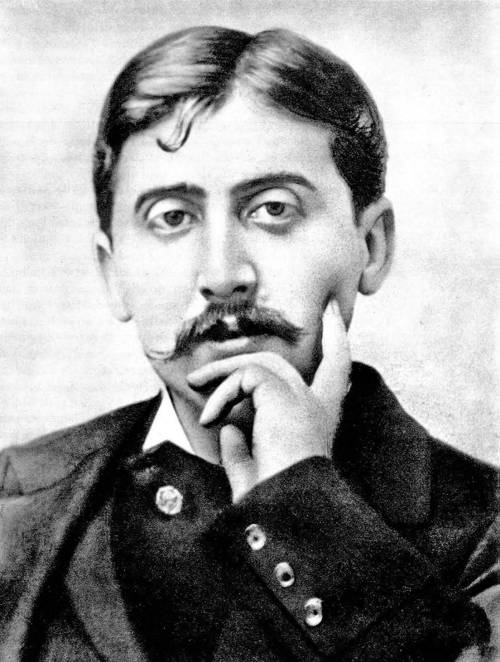
FAQ About Marcel Proust

Who was Marcel Proust?
Marcel Proust was a French novelist, critic, and essayist known for his monumental work In Search of Lost Time (also known as Remembrance of Things Past). Spanning seven volumes, this work is considered one of the greatest literary achievements of the 20th century. Proust was born on July 10, 1871, and died on November 18, 1922.

What is 'In Search of Lost Time' about?
In Search of Lost Time, also known as Remembrance of Things Past, is a novel in seven volumes by Marcel Proust. It explores themes of memory, time, and identity. The work delves deeply into the narrator's experiences and memories, reflecting on how events and relationships impact one’s sense of self. It's known for its philosophical depth and innovative narrative style.

How many volumes are in 'In Search of Lost Time'?
In Search of Lost Time is composed of seven volumes. These volumes are: Swann's Way, In the Shadow of Young Girls in Flower, The Guermantes Way, Sodom and Gomorrah, The Prisoner, The Fugitive, and Time Regained.

What themes are explored in Marcel Proust's work?
Marcel Proust's work, particularly In Search of Lost Time, explores a variety of themes, including memory, time, identity, love, and the search for truth. He is noted for his examination of how personal introspection and external experiences shape one’s perception of reality.

When was Marcel Proust's 'In Search of Lost Time' published?
The first volume of In Search of Lost Time, Swann's Way, was published in 1913. The final volume, Time Regained, was published posthumously in 1927. The entire work consists of seven volumes and was completed between 1913 and 1927.

What is the narrative style of Proust's 'In Search of Lost Time'?
Proust's In Search of Lost Time is known for its stream-of-consciousness narrative style. This approach allows readers to experience the protagonist's complex thoughts and memories as they occur, providing a deep, introspective view into his consciousness. It is distinguished by its long sentences and detailed descriptions.

What is a common misconception about Proust's writing?
A common misconception about Proust's writing is that it is inaccessible and overly difficult due to its length and intricacy. While his style is complex and detailed, many readers find it rewarding and absorbing due to the profound exploration of universal themes like time, memory, and identity.

Was Marcel Proust awarded any literary prizes during his lifetime?
Yes, Marcel Proust was awarded the Prix Goncourt in 1919 for the second volume of In Search of Lost Time, titled In the Shadow of Young Girls in Flower. The Prix Goncourt is one of the most prestigious literary awards in France.

How did memory play a role in Proust's 'In Search of Lost Time'?
Memory plays a central role in Marcel Proust's In Search of Lost Time. The novel examines how involuntary memories — such as those triggered by taste or smell, epitomized by the famous madeleine scene — shape one's understanding of the present and past. Through these memories, Proust explores the fluidity and complexity of time and identity.

What influenced Proust's writing style and themes?
Proust was influenced by a range of sources, including the works of 19th-century realist novels, the philosophy of Henri Bergson with its emphasis on time and memory, and his own experiences of high society and personal introspection. His health struggles and relationships also deeply influenced his themes and narrative approach.

Why is Marcel Proust's work considered significant in literature?
Marcel Proust's work is significant due to its innovative narrative techniques, profound philosophical explorations, and detailed psychological insights. His in-depth treatment of themes such as time and memory, combined with his unique style, has had a lasting impact on both modernist literature and the broader literary canon.

In what language was 'In Search of Lost Time' originally written?
In Search of Lost Time was originally written in French. It has since been translated into numerous languages, allowing it to reach a global audience and influence writers and readers worldwide.

Did Marcel Proust have any notable relationships that influenced his work?
Proust had several significant relationships that influenced his writing, including friendships and romantic affiliations within Parisian high society. Many characters in his work are believed to be inspired by real-life figures, as his social experiences provided a rich tapestry for his exploration of human nature and societal norms.

Where can I find English translations of Proust's works?
English translations of Marcel Proust's works, especially In Search of Lost Time, can be found in most major bookstores and libraries. Notable translations include those by C.K. Scott Moncrieff and Terence Kilmartin, as well as Lydia Davis who translated Swann's Way. Digital versions are available from online retailers and platforms like Amazon and Project Gutenberg.

How did Marcel Proust's health influence his writing?
Marcel Proust suffered from asthma and other health issues throughout his life, which greatly influenced his writing process and perspective. His illness often kept him confined indoors, providing him with the solitude necessary for deep reflection and writing. These health challenges are reflected in the introspective and sometimes claustrophobic atmosphere of his work.

What is the significance of the madeleine scene in Proust's work?
The madeleine scene in Swann's Way, the first volume of In Search of Lost Time, is one of the most famous passages in literature. It illustrates the concept of involuntary memory, where the taste of a madeleine dipped in tea evokes vivid memories from the narrator's childhood. This scene exemplifies Proust's exploration of how sensory experiences can unlock the past.

Are there any adaptations of 'In Search of Lost Time'?
Yes, Marcel Proust's In Search of Lost Time has been adapted into various media, including film, television, and theater. Notable adaptations include the 1984 film Swann in Love and the 1999 film Time Regained directed by Raúl Ruiz. These adaptations attempt to capture the novel’s complex themes and narrative style.

What personal challenges did Marcel Proust face during his life?
Marcel Proust faced numerous personal challenges, including chronic health issues such as severe asthma, which impacted his lifestyle and writing. He also navigated complex social and romantic relationships in the restrictive cultural environment of the time. Despite these obstacles, he succeeded in producing one of literature's greatest works.

How has Proust influenced modern literature?
Proust has significantly influenced modern literature through his innovative narrative techniques, particularly stream of consciousness and his exploration of consciousness and time. Many writers, including Virginia Woolf, James Joyce, and Gabriel García Márquez, cite Proust as an inspiration for his introspective style and profound themes.

What is the publishing history of 'In Search of Lost Time'?
The first part of In Search of Lost Time was published in 1913, initially rejected by publishers until Proust self-published. Later volumes were released throughout Proust's life and posthumously, completing with Time Regained in 1927. Its complex release history highlights the initially limited but gradually expansive recognition of its literary value.
